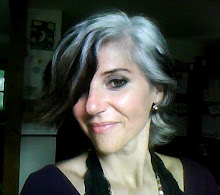"We apply principles to achieve balance between the front and the back of the body, the inner and outer body, right and left side, contraction and expansion, mind and heart. (when we are playing or singing, don't we naturally do this, or work towards this?)
Also described are dual actions, which means that every single action must be balanced by an opposing, counter or “dual” action. If one action or instruction overpowers another we create an imbalance and put the body at the weakest part at risk. When we give an instruction that only works in one direction the body will get knocked of centre. (For musicians---Overuse syndrome, carpal tunnel, tendonitis, backpain, etc.)
Yoga is about finding our centre, when you find the centre in your body, your mind will follow along. So we have to observe that the results of our actions are balancing.
The result should always be that we create length and space in the body, but to achieve that in a safe and supported way we have to use muscle energy and core stability to protect the joints. (we do this at our instruments, yes?)
Ok, so what are we talking about here, what principles can we apply in every pose to make sure we’re balanced and supported enough to enjoy moving in a pose to the deepest level available to us. (allow the deepest level of music making to emerge)
The goal is to find the middle between extremes, once we do we can perform the postures with ease and joy." (We can perform our music with joy and ease!)
So, I was in an Anusara yoga class yesterday morning, with a teacher who had just been in an immersion workshop with Anusara's founder, John Friend. My teacher was inspired and ready to share many new insights with our class. I was certainly appreciative of all that she shared yesterday, but one insight in particular really caught my attention, not only for how it informed and strengthened my yoga poses, but also for how much it reminded me of a certain aspect of piano playing.
To put it simply, in yoga, the feet are essential...the way they connect with the earth is the fundamental basis of a pose. We feel how each toe connects with the ground, and then we put our attention on how the toes connect with the various places on the foot, and then how the foot bones, muscles, and tendons connect with the ankle, inside and outside of leg, hips, etc. It requires toes that are active and spread, and in full connection with the earth to enliven the many standing poses. We engage the four corners of the feet with the earth, and then we bring this energy upward through the legs, for strength and balance. We work to spread the toes far apart, so that each toe has its' own independence, and this also creates something like a web, so that our legs have a broader base to stand on.
(For piano, I think of the fingers on the keys, like I do the toes on the ground in yoga. Think about it, except for the foot being on the pedal, the tips of the fingers are the only parts of the body literally touching that huge instrument. "Grounding" the fingers, or maybe even better said, giving the fingers optimal connection with the keys, is fundamental to playing.)
